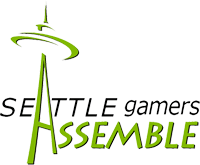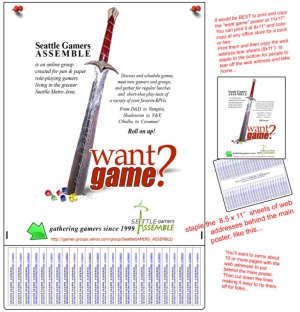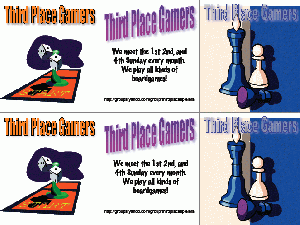Forming a Gaming Community
Seattle Gamers Assemble! (SGA) is a loose community of role-players centered around Seattle, Washington. After several years of operations, we thought it might be nice to share what we've learned about setting up a gaming community.
Contents
- What is a Gaming Community?
- In this article, we mean by "gaming community" a group of people that adopts a certain structure or organization to support game-related activities. At SGA, we focus on role-playing games but most of this advice is directly applicable for other types of games or even other activities.
Vid and Pic Freak On. Mouse cursor shaped kite. Funny Taco Bell sign. Dude escorting a weird looking little guy. Guy ,
that he has shot in his travels and started a site with themThen we a hot Latina, amateur solo model site titled ,
his life as he searches for hot models to pose naked for him or to get a little dirty on camera for him. The blog is,
PROMOTING
If other people who might be interested in participating in this gaming community never hear about it, they can't join it. You need to get people: (A) aware that your community exists, (B) interested so they'll want to join, and even (C) excited about it so they'll want to participate. That means you have to distribute information about what the group, club, list, etc. is all about, what activities you organize or support, and why it's fun and interesting.
Creating Buzz
Notice how every type of event your group may organize requires some form of promotion. It begins with posting a notice on your mailing list of course; but don't think for a moment that this will suffice. You need to get in contact with potential participants and get their attention!
- Naturally, you best buzz is still word of mouth. Talk to your friends, your community members, the gamers you meet at the local stores, etc.
- You catch more flies with honey than with vinegar, we're told. Tell people what's in it for them! Why should they join your group, participate in your event, etc.? Surely you're doing this because it will be fun. Tell them how much fun!
- A proven record is the best way to show folks your promises are not empty. Show them how much fun the previous event was, and why they should be sorry they missed it! Take a look at some of our suggestions for post-game promotion of weekly game events.
- When promoting upcoming events, consider posting invitations on game forums such as RPG.net, EN World, theRPGsite, or Story Games, as well as more focused forums. Don't spam them! Simply introduce yourself and explain why you think this event is of interest to the gamer community. Be courteous and patient. Ask other members of your community to chime in and give their perspective.
Promotional Materials
- POSTERS
If you have someone in your group who has graphic skills, consider putting together a poster to advertise your community.
- What: Put an attractive, eye-catching image but do not clutter the poster with an overabundance of visual elements. Include a clear title and your game club's name. In smaller print, you can have a short description of your club events, just enough detail to get people interested. And, of course, include the club's contact information (URL is best.) Do not include information that is subject to change without warning, such as the location of any events. That's what your Website or forum is for. And for Heaven's sake, proofread the poster before finalizing! Typos in promotional materials are at best a turn-off and at worst a cause of problems (e.g., wrong contact info.)
- How: We like to do ours on 11" x 17" "tabloid" format (A3 would be closest among international or ISO 216 formats), with tearaway tabs giving our name and URL. Tearaway tabs are printed on two rows length-wise on 8.5"x11" letter paper (use A4 for international format). Remember to bring thumb tacks and tape when you go a-postering. See a tutorial prepared by Demongg for our club's posters by clicking on the image.
- Where: At the very least, hit all the gaming stores, comic book stores, LAN gaming spots, book stores specializing in science-fiction and fantasy, etc. We also try to hit coffee shops, Internet cafes, etc. that are located nearby. Ask the owner or manager politely whether they wouldn't mind you hanging the poster; be prepared to explain why it would be a good idea for them to have your poster around (e.g., building a more vital gaming community, promoting more different games, etc.) Other good places to post include college and university campuses, and high schools if you can get permission.
- HANDBILLS
- What: Although you should strive not to clutter your design, you can afford to put a little more detail than on posters if you want, because the reader has a little more leisure to read them. It's acceptable to put more "perishable" information because handbills have a fairly short shelf life. You can have more contact information, perhaps some location and schedule information for upcoming events. Still, don't overdo it; easy does it!
- How: You can easily make handbills by printing four to a standard page: this yields four 4.25" x 5.5" handbills if you use American 8.5" x 11" letter paper, or four A6 handbills if you use international (ISO 216) A4 paper. For visual appeal, handbills can be printed in black ink on colour paper at modest cost or, if you're feeling ambitious, in full colour on white paper. Plan on printing at least 50 handbills per location where they will be available.
- Where: Same places as the posters, but you may need a little extra diplomacy because you need to ask the owner or manager if you can leave a stack of handbills near the cash register. In bookstores, ask if they would be willing to add one to each purchase, just like they do with bookmarks. (You can be sneaky and make bookmarks in lieu of handbills — just size them appropriately and print them on cardstock rather than paper.) Be sure to replenish the stacks as needed, for the duration of your promotion effort (it can be on-going if you have the manpower and budget.)
- STANDUP SIGNS
A standup sign can easily be made by folding a page in three and forming a little self-standing triangular sleeve.
- What: About the same content as a handbill, but don't clutter!
- How: Divide letter or A4 paper in thirds along its length and in half along its width. Print three sides to form the sleeve. Cut in half along the long direction, fold each in three, and tape shut. You get two signs per page. See the example illustrated, created by Kedamono for Third Place Gamers
- Where: A little trickier yet — these signs need to be spread out on tables. Ask the manager of gamer-friendly coffee shops, and any location where gamers may be welcome to set up (local fast-food joint, college cafeteria, etc.) Here, we have the very nice Third Place Commons, a kind of indoor urban park. You should expect your little signs to disappear fairly rapidly as people clear them to make space when using the tables. Re-stock as needed.
- ADS
Ads are a little tricky because they're so ubiquitous. We're deluged by ads everywhere around us. Where will you advertise? Will anyone notice your ad among all this competition for attention? How much will this cost?
Some of the logical places you might want to try first:
- Exchanging ads with other gaming organizations in your area.
- Free ads are sometimes available with some game publishers.
- Free or reduced-cost ads in the program of local gaming conventions.
- Pony up for a paid ad in a well-read gaming magazine — that's well-read locally, of course.
- Paid banner ads on sites like RPG.net or ENWorld (mostly useful to advertise specific upcoming events).
RESOURCES
Tips and Ideas
- Game Circles: Bringing gamers together
- Games Workshop's gaming club resources
- Negative Space's Role-Playing Meeting Grounds
- JimBobOz's Big List of Links
- Wikipedia:Game club (article stub)
- Starting and Running a Role-Playing Games Club by Katrina Middelburg-Creswell
- Building a Player Network
Other Communities
- Nerd SoCal Forum
- Nerd NYC Forum
- Story Games: Boston
- Troupe Berkeley
- Reno Roleplayers
- UK Role Players
Return to Seattle Gamers Assemble!


